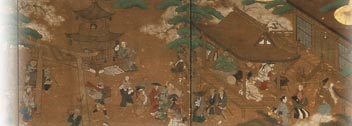International symposium "Problems of theater research from the 16th century until the 18th century"
Outline
| date | November 25 - 27, 2011 |
|---|---|
| Venue | Waseda University (Okuma Auditorium) |
Details
The 16th through 18th centuries represent the period when the archetype of what the world now normally calls “theatre” was established. An international symposium was held that focused on this period, with the aim of making international comparisons between Japanese, Asian, and Western theatre. Sponsored jointly by the Japanese Theatre Research Course and the Western Theatre Research Course, this event was originally scheduled for June 2011, but had to be postponed until November 2011 because of the Great East Japan Earthquake. Despite some changes, we were able to carry out the program essentially as planned. We would like to express our gratitude to the participants from both Japan and abroad for their cooperation, and present this report of the proceedings.
The first day of the symposium began with a lecture by TOGUCHI Tamiya on the emergence in the 17th century of the first professional actresses, using materials that he himself discovered in France. This was followed by a survey presented by Odile Dussud of newspaper articles written about early French actresses, and an examination of unusual female actors in Japan presented by KODAMA Ryuichi. The second day began with presentations by two associate fellows (AOYAGI Yuriko and NISHIMURA Mitsuhiro), followed by an introduction to the current status of old stages remaining in Europe by Pavel Salvko, who is from the Czech Republic. Next came a presentation by CAO Fei on the diversity of temple theatre in China’s Ming and Qing dynasties, and an examination by HASHIMOTO No of changes in scenography in relation to Corneille’s machine play Andromède and stage machinery of the time. These were followed by KAKO Tadayoshi’s presentation on the unique structure of theatre buildings in Japan and changes that have occurred in their performance spaces, and Michaël Desprez’ lecture on the constitution of the first theatrical companies in France and Italy. The third day began with presentations by three associate fellows (OCHIAI Rieko, KIMURA Ryo, and ENOMOTO Keiko), followed by Bruna Filippi (from Italy), who gave a lecture on the true significance of the stage practices of the Jesuits in their schools. Next was HAGIWARA Yoshiko’s examination of the education that Racine received at Port-Royal abbey and its relationship to his plays, followed by TAKEMOTO Mikio’s lecture on “Shingi” (“Matters concerning the Gods”) section of Zeami’s Fushikaden (The Flowering Spirit), through which he explored the issues of the performance art and religious beliefs of Zeami’s troupe. Finally, WANG Xingrong gave a presentation on the characteristics of theatrical education in the late Qing dynasty.
Most of the presentations were accompanied by slides that made the content easy to understand and were very useful in making detailed comparisons between virtually contemporaneous theatre practices in different countries. Concerning the emergence of professional actresses, greater depth would have been achieved if comparable information had been additionally presented on the early days in Italy and China. With regard to theatres and stages, the apparently deep relationship between the square stage used in China’s temple theatre and Japan’s Noh stage warrants further comparative study. It was also keenly evident that theatrical education has things to teach in all countries, not only for on behalf of religious belief but as a guide for how people should conduct their lives. Viewed as a whole, this international symposium was a highly significant reminder of the importance of international comparison in theatre.


